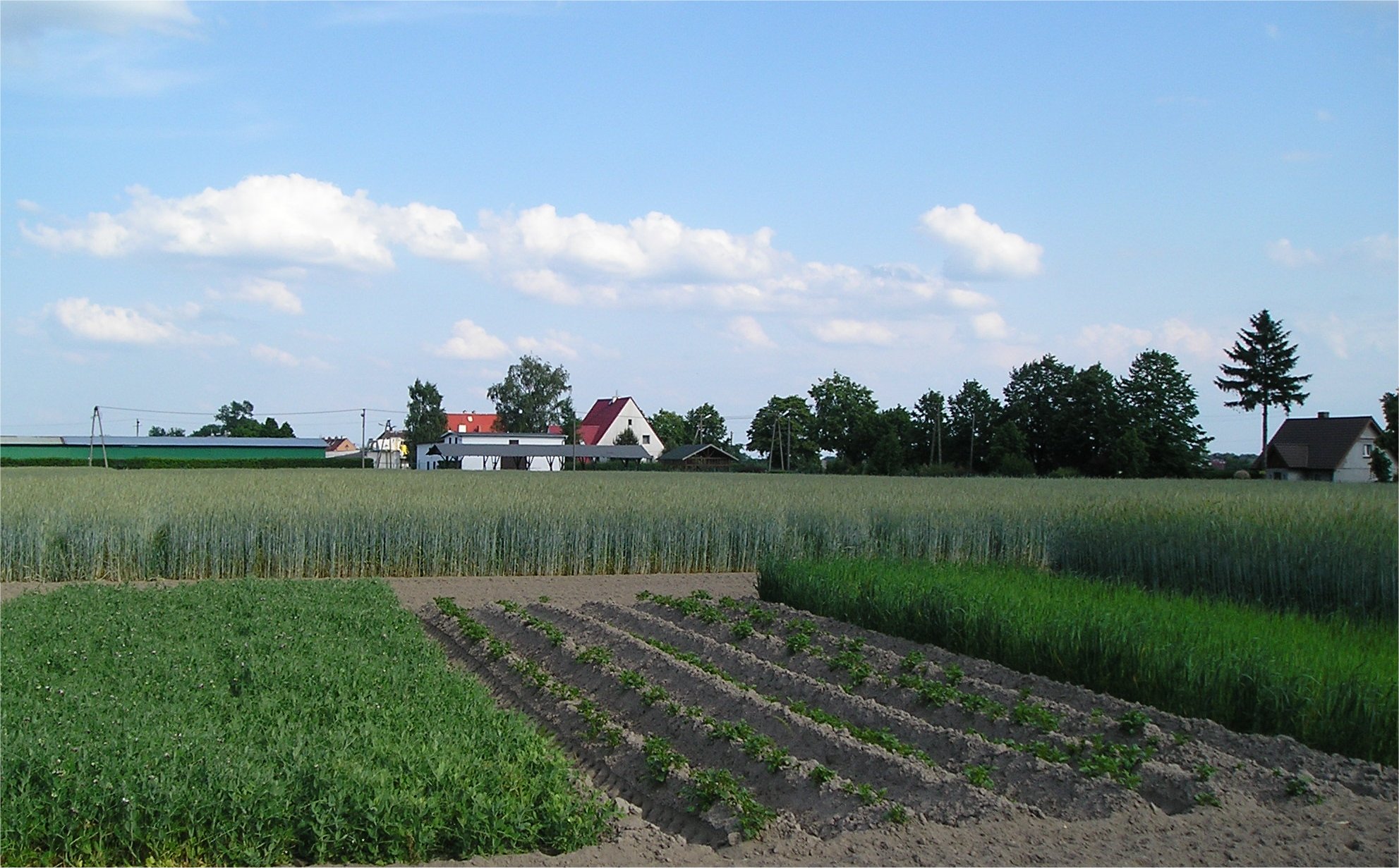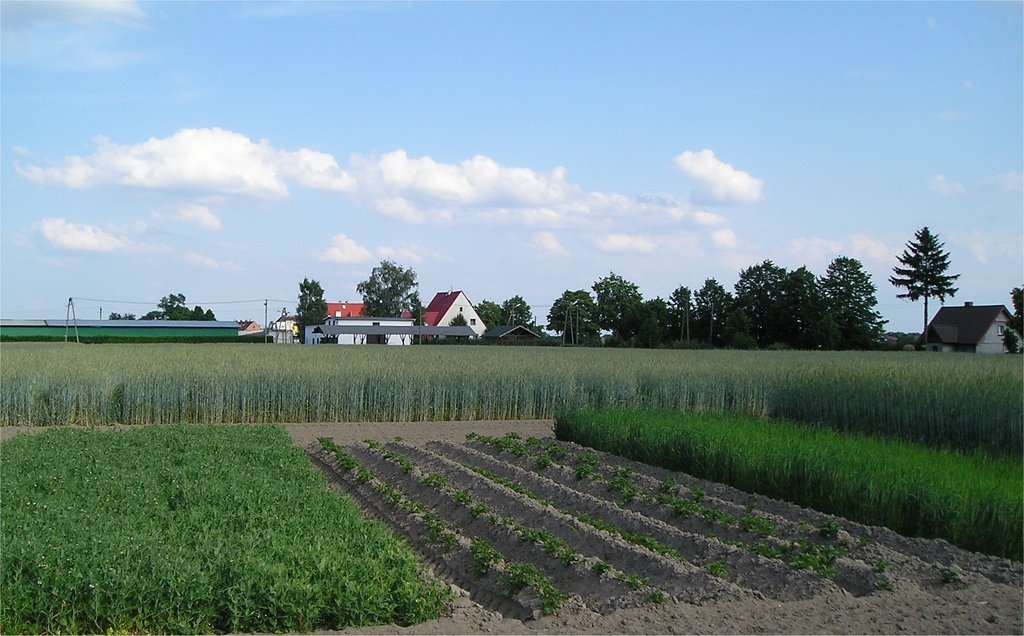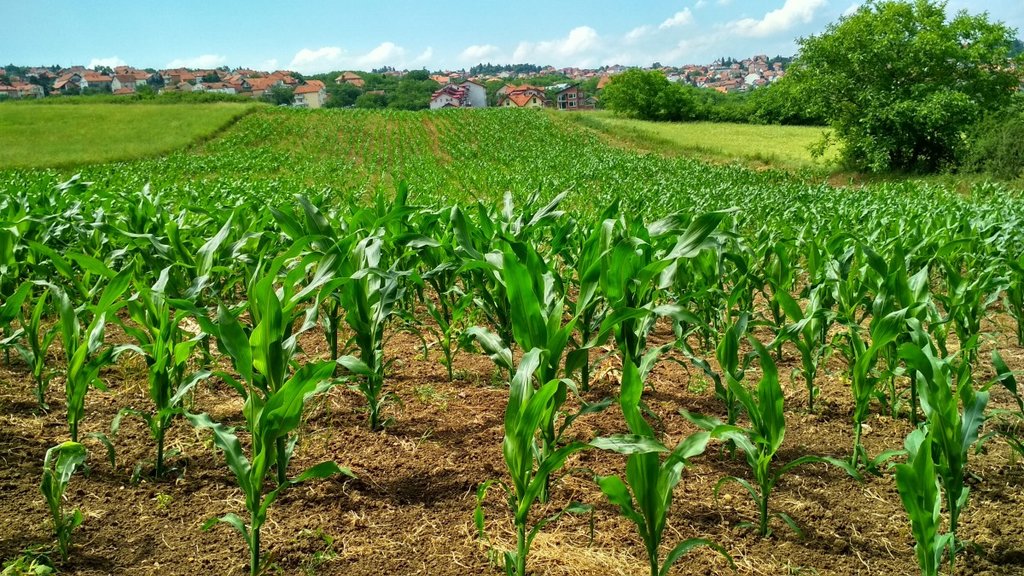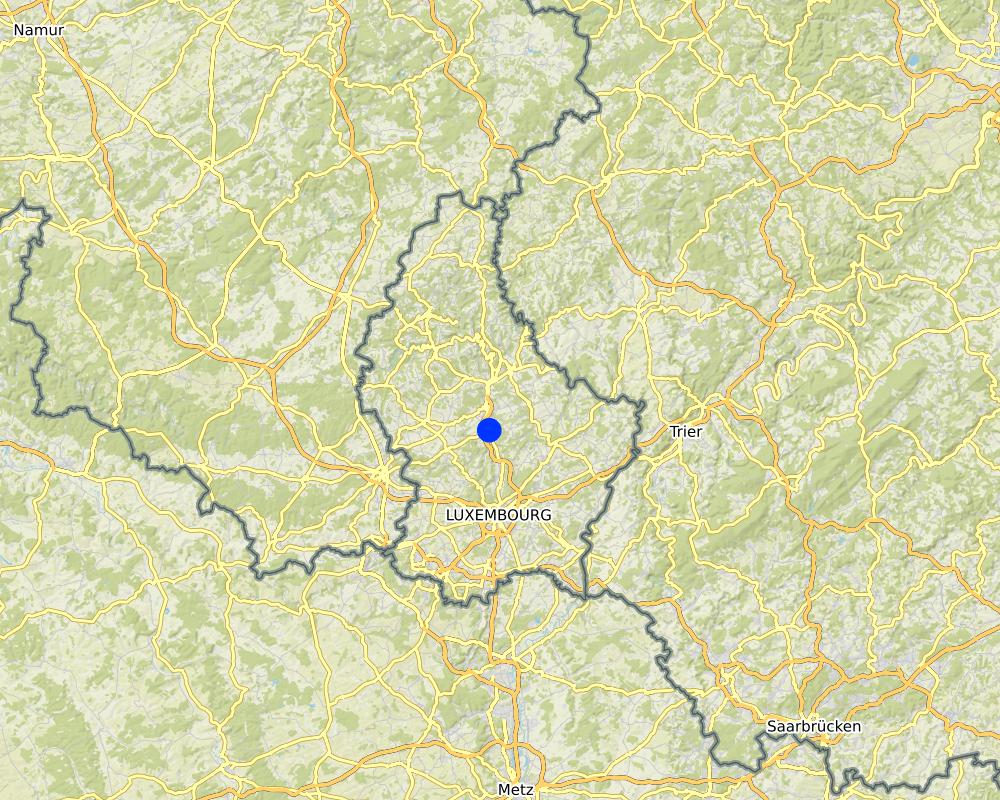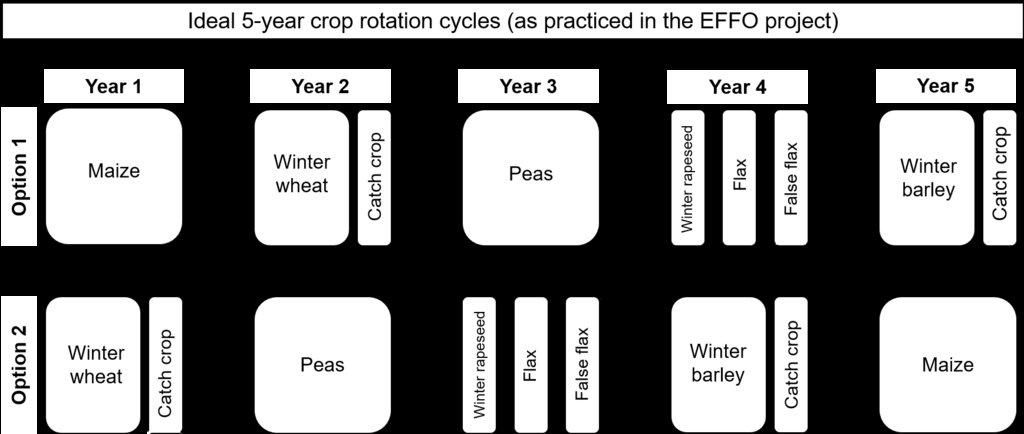Common Agricultural Policy (CAP) agri-environment-climate measure: Rotation program [卢森堡]
- 创建:
- 更新:
- 编制者: Sabine Reinsch
- 编辑者: David Robinson
- 审查者: Rima Mekdaschi Studer
AUK-Fruchtfolgeprogramm
technologies_5617 - 卢森堡
查看章节
全部展开 全部收起1. 一般信息
1.2 参与该技术评估和文件编制的资源人员和机构的联系方式
关键资源人
co-compiler:
Conter Gérard
Lycée technique Agricole, Ettelbrück
卢森堡
SLM专业人员:
Richarz Frank
Landwirtschaftlech Kooperatioun Uewersauer (LAKU)
卢森堡
SLM专业人员:
Altmann Gilles
Institut fir biologesch Landwirtschaft an Agrarkultur Luxemburg (IBLA)
卢森堡
有助于对技术进行记录/评估的项目名称(如相关)
European Interreg project FABulous Farmers有助于对技术进行记录/评估的机构名称(如相关)
UK Centre for Ecology & Hydrology (CEH) - 英国1.3 关于使用通过WOCAT记录的数据的条件
编制者和关键资源人员接受有关使用通过WOCAT记录数据的条件。:
是
1.4 所述技术的可持续性声明
这里所描述的技术在土地退化方面是否存在问题,导致无法被认为是一种可持续的土地管理技术?:
否
2. SLM技术的说明
2.1 技术简介
技术定义:
Rotation program: Diverse rotation of at least five crops on farm level for more biodiversity and less intensive cultivation practice
2.2 技术的详细说明
说明:
The Common Agricultural Policy (CAP) agri-environment-climate measure aims to increase diversification of arable crops to overcome negative impacts of monocultures. The technology described here focuses on the benefit of the rotation programme focusing on 5-year rotation cycles (although CAP aid is only paid with at least 5 different crops planted in any given year). The program applies to all arable crops on the farm, with the exception of permanent or temporary meadows and pastures.
The allocation of the CAP aid is subject to compliance with the following conditions:
At least five different arable crops must be grown during a crop year (as part of the crop rotation programme)
The minimum area per crop shall not be less than 10 per cent of the total area of arable crops on the farm
The share of maize cannot exceed 30 percent
The same crop cannot be grown more than twice on the same field during the commitment period (5 years)
The conversion of permanent pastures and pasture to arable land is forbidden on the whole farm area
The annual aid per hectare is:
- 100€ if total surface of arable land on the farm is less than 50 hectares
- 75€ if total surface of arable land on the farm is between 50 and 100 hectares
- 60€ if total surface of arable land on the farm is above 100 hectares.
Utilised agricultural area (UAA) in Luxembourg is composed to >50% of permanent grassland (due to pedologic and topographic reasons); more than 70% of UAA is used for fodder production. The fodder is used in cattle production (mainly dairy cows). In the past years the arable production concentrated very much on maize (=>easy and reliable fodder plant) and winter wheat (=> good economic results). On many farms, the rotation degrades to a 2 years rotation: maize – wheat, maize – wheat, … with negative impacts on the soil, problematic weeds, high inputs (fertilisers, pesticides, …). The aim of the CAP agri-environment-climate measure: Rotation program was to reverse this tendency and to give incentives to bring farmers back to longer rotations (at least 5 years). On a short perspective these are less profitable (and have to be financially compensated) but on a long-term view they have many ecological (and economic) benefits. The EFFO-Project (Effizienz durch Fortbildung = Efficiency by Edification) is a demonstration project, run on three pilot farms showing the advantages and practicability of longer rotations and helping thus to implement these in practice.
Benefits of the CAP rotation program:
- reduced land degradation and increased soil health by reduction of soil erosion
- conservation of ecosystems
- protection of water courses and therewith increasing water availability and quality
- increased (bio)diversity by increasing plant and associated fauna diversity
- reduced disaster risks (rainstorms, heatwaves, droughts) due to higher plant diversity and thus increased resilience
- increased crop and fodder quality
Strengths of the technology according to the users:
- higher resilience of the cropping system
- advantage of receiving CAP payments
- positive impact on soil structure and (bio) diversity
- positive impact on (drinking) water quantity and quality
Disadvantages of the technology:
- increased administrative burden
- increased planning of crop rotations needed (more complicated to organise)
The compilation of this SLM is a part of the European Interreg project FABulous Farmers which aims to reduce the reliance on external inputs by encouraging the use of methods and interventions that increase the farm’s Functional AgroBiodiversity (FAB). Visit www.fabulousfarmers.eu and www.nweurope.eu/Fabulous-Farmers for more information.
2.3 技术照片
2.5 已应用该技术的、本评估所涵盖的国家/地区/地点
国家:
卢森堡
区域/州/省:
Entire country
有关地点的进一步说明:
Arable land
具体说明该技术的分布:
- 均匀地分布在一个区域
如果技术均匀分布在一个区域,则指定覆盖的区域(单位为平方千米):
70060000.0
如果不知道精确的区域,请注明大致覆盖的区域:
- > 10,000 平方千米
技术现场是否位于永久保护区?:
否
Map
×2.6 实施日期
注明实施年份:
2014
如果不知道确切的年份,请说明大概的日期:
- 不到10年前(最近)
2.7 技术介绍
- CAP
注释(项目类型等):
CAP = Common Agricultural Policy
https://ec.europa.eu/info/food-farming-fisheries/key-policies/common-agricultural-policy/cap-glance_en
3. SLM技术的分类
3.1 该技术的主要目的
- 减少、预防、恢复土地退化
- 保护生态系统
- 结合其他技术保护流域/下游区域
- 保持/提高生物多样性
- 降低灾害风险
3.2 应用该技术的当前土地利用类型
同一土地单元内混合使用的土地::
否

农田
- 一年一作
年作 - 具体指明作物:
- 谷类 - 大麦
- 谷物类 - 玉米
- 谷类 - 小麦(冬季)
- 纤维作物 - 亚麻、大麻和其他
- 豆科牧草和豆类 - 豌豆
每年的生长季节数:
- 1
采用间作制度了吗?:
是
如果是,说明哪些作物是间作的:
any type of catch crop; different species inter-cropped in different regions of the country
采用轮作制度了吗?:
是
如果是,请具体说明:
Maize, winter wheat, peas, winter rapeseed, flax, false flax, winter barley
3.3 由于技术的实施,土地使用是否发生了变化?
由于技术的实施,土地使用是否发生了变化?:
- 否(继续问题3.4)
同一土地单元内混合使用的土地::
否
3.4 供水
该技术所应用土地的供水:
- 雨养
3.5 该技术所属的SLM组
- 轮作制度(轮作、休耕、轮垦)
- 减少基于生态系统的灾害风险
3.6 包含该技术的可持续土地管理措施

农艺措施
- A1:植被和土壤覆盖层

管理措施
- M2:改变管理/强度级别
3.7 该技术强调的主要土地退化类型

土壤水蚀
- Wt:表土流失/地表侵蚀

生物性退化
- Bc:植被覆盖的减少
- Bh:栖息地丧失
- Bq:数量/生物量减少
- Bl:土壤寿命损失
- Bp:害虫/疾病增加,捕食者减少
3.8 防止、减少或恢复土地退化
具体数量名该技术与土地退化有关的目标:
- 防止土地退化
- 减少土地退化
4. 技术规范、实施活动、投入和成本
4.1 该技术的技术图纸
技术规范(与技术图纸相关):
Across Luxembourg, sizes of fields and farms vary. Ideal 5-year crop rotation cycles are suggested as part of the EFFO project to maximise benefits of the crop rotations.
https://www.list.lu/en/research/project/effo
作者:
EFFO project
日期:
09/10/2019
4.2 有关投入和成本计算的一般信息
具体说明成本和投入是如何计算的:
- 每个技术区域
注明尺寸和面积单位:
7006 ha
其它/国家货币(具体说明):
€
如相关,注明美元与当地货币的汇率(例如1美元=79.9巴西雷亚尔):1美元=:
0.91
4.3 技术建立活动
| 活动 | 时间(季度) | |
|---|---|---|
| 1. | change from a two years rotation (wheat-maize) to a diverse five years rotation | annually |
4.4 技术建立所需要的费用和投入
| 对投入进行具体说明 | 单位 | 数量 | 单位成本 | 每项投入的总成本 | 土地使用者承担的成本% | |
|---|---|---|---|---|---|---|
| 劳动力 | laber total | 1.0 | 69.0 | 69.0 | ||
| 植物材料 | seeds | 1.0 | 130.0 | 130.0 | 100.0 | |
| 肥料和杀菌剂 | Fertilizer | 1.0 | 164.0 | 164.0 | ||
| 肥料和杀菌剂 | Herbizide | 1.0 | 145.0 | 145.0 | ||
| 其它 | additional | 1.0 | 37.0 | 37.0 | ||
| 技术建立所需总成本 | 545.0 | |||||
| 技术建立总成本,美元 | 598.9 | |||||
注释:
Costs are for a total area of 5 ha planted over 5 years with: 1) winter wheat, 2) peas, 3) rapeseed, 4) winter barley, 5) maize.
This crop rotation results in a rotation benefit of €100.
Data retrieved from the "Fruchtfolgerechner" of the EFFO.
4.7 影响成本的最重要因素
描述影响成本的最决定性因素:
Yields, market prices, logistical difficulties
5. 自然和人文环境
5.1 气候
年降雨量
- < 250毫米
- 251-500毫米
- 501-750毫米
- 751-1,000毫米
- 1,001-1,500毫米
- 1,501-2,000毫米
- 2,001-3,000毫米
- 3,001-4,000毫米
- > 4,000毫米
有关降雨的规范/注释:
In the last years extreme weather conditions (rainfall, drought, …) are happening more and more often.
Healthy soils (on the basis of large rotations) are more resilient towards these extreme weather situations.
农业气候带
- 潮湿的
- 半湿润
5.2 地形
平均坡度:
- 水平(0-2%)
- 缓降(3-5%)
- 平缓(6-10%)
- 滚坡(11-15%)
- 崎岖(16-30%)
- 陡峭(31-60%)
- 非常陡峭(>60%)
地形:
- 高原/平原
- 山脊
- 山坡
- 山地斜坡
- 麓坡
- 谷底
垂直分布带:
- 0-100 m a.s.l.
- 101-500 m a.s.l.
- 501-1,000 m a.s.l.
- 1,001-1,500 m a.s.l.
- 1,501-2,000 m a.s.l.
- 2,001-2,500 m a.s.l.
- 2,501-3,000 m a.s.l.
- 3,001-4,000 m a.s.l.
- > 4,000 m a.s.l.
说明该技术是否专门应用于:
- 不相关
5.3 土壤
平均土层深度:
- 非常浅(0-20厘米)
- 浅(21-50厘米)
- 中等深度(51-80厘米)
- 深(81-120厘米)
- 非常深(> 120厘米)
土壤质地(表土):
- 粗粒/轻(砂质)
- 中粒(壤土、粉土)
土壤质地(地表以下> 20厘米):
- 粗粒/轻(砂质)
- 中粒(壤土、粉土)
表土有机质:
- 中(1-3%)
如有可能,附上完整的土壤描述或具体说明可用的信息,例如土壤类型、土壤酸碱度、阳离子交换能力、氮、盐度等。:
from a pH below 5 in the north to a pH above 7 in the south (also check Soil acidity map of Luxembourg: www.geoportail.lu)
5.4 水资源可用性和质量
地下水位表:
5-50米
地表水的可用性:
好
水质(未处理):
良好饮用水
水质请参考::
地下水
水的盐度有问题吗?:
否
该区域正在发生洪水吗?:
否
5.5 生物多样性
物种多样性:
- 低
栖息地多样性:
- 低
关于生物多样性的注释和进一步规范:
Maize and winter wheat as main crops are not very beneficial to a (bio-) diversity. One of the goals of the described Technology is to improve (bio-) diversity
5.6 应用该技术的土地使用者的特征
定栖或游牧:
- 定栖的
生产系统的市场定位:
- 商业/市场
非农收入:
- 低于全部收入的10%
相对财富水平:
- 丰富
- 非常丰富
个人或集体:
- 个人/家庭
机械化水平:
- 机械化/电动
土地使用者的年龄:
- 中年人
说明土地使用者的其他有关特征:
Mainly family farms
5.7 应用该技术的土地使用者使用的平均土地面积
- < 0.5 公顷
- 0.5-1 公顷
- 1-2 公顷
- 2-5公顷
- 5-15公顷
- 15-50公顷
- 50-100公顷
- 100-500公顷
- 500-1,000公顷
- 1,000-10,000公顷
- > 10,000公顷
这被认为是小规模、中规模还是大规模的(参照当地实际情况)?:
- 中等规模的
5.8 土地所有权、土地使用权和水使用权
土地所有权:
- 个人,未命名
土地使用权:
- 个人
用水权:
- 社区(有组织)
土地使用权是否基于传统的法律制度?:
否
5.9 进入服务和基础设施的通道
健康:
- 贫瘠
- 适度的
- 好
教育:
- 贫瘠
- 适度的
- 好
技术援助:
- 贫瘠
- 适度的
- 好
就业(例如非农):
- 贫瘠
- 适度的
- 好
市场:
- 贫瘠
- 适度的
- 好
能源:
- 贫瘠
- 适度的
- 好
道路和交通:
- 贫瘠
- 适度的
- 好
饮用水和卫生设施:
- 贫瘠
- 适度的
- 好
金融服务:
- 贫瘠
- 适度的
- 好
6. 影响和结论性说明
6.1 该技术的现场影响
社会经济效应
生产
作物质量
饲料质量
生产故障风险
产品多样性
水资源可用性和质量
饮用水的可用性
饮用水的质量
家畜用水的可用性
家畜用水的质量
收入和成本
农业投入费用
注释/具体说明:
also through CAP subsidies
农业收入
注释/具体说明:
also through CAP subsidies
工作量
社会文化影响
食品安全/自给自足
健康状况
文化机会
娱乐机会
SLM/土地退化知识
生态影响
水循环/径流
水量
水质
水的回收/收集
地表径流
多余水的排放
地下水位/含水层
蒸发
土壤
土壤水分
土壤流失
土壤压实
养分循环/补给
土壤有机物/地下C
生物多样性:植被、动物
植物多样性
有益物种
栖息地多样性
害虫/疾病控制
减少气候和灾害风险
洪水影响
干旱影响
碳和温室气体的排放
微气候
6.2 该技术的场外影响已经显现
水资源可用性
旱季稳定可靠的水流
地下水/河流污染
缓冲/过滤能力
对公共/私人基础设施的破坏
6.3 技术对渐变气候以及与气候相关的极端情况/灾害的暴露和敏感性(土地使用者认为的极端情况/灾害)
渐变气候
渐变气候
| 季节 | 增加或减少 | 该技术是如何应对的? | |
|---|---|---|---|
| 年温度 | 增加 | 好 | |
| 季节性温度 | 冬季 | 增加 | 好 |
| 季节性温度 | 春季 | 增加 | 好 |
| 季节性温度 | 夏季 | 增加 | 好 |
| 季节性温度 | 秋季 | 增加 | 好 |
| 季雨量 | 冬季 | 减少 | 好 |
| 季雨量 | 春季 | 减少 | 好 |
| 季雨量 | 夏季 | 减少 | 好 |
| 季雨量 | 秋季 | 减少 | 好 |
气候有关的极端情况(灾害)
气象灾害
| 该技术是如何应对的? | |
|---|---|
| 局地暴雨 | 好 |
气候灾害
| 该技术是如何应对的? | |
|---|---|
| 热浪 | 好 |
| 干旱 | 好 |
水文灾害
| 该技术是如何应对的? | |
|---|---|
| 比较和缓的(河道)洪水 | 非常好 |
6.4 成本效益分析
技术收益与技术建立成本相比如何(从土地使用者的角度看)?
短期回报:
轻度消极
长期回报:
积极
技术收益与技术维护成本/经常性成本相比如何(从土地使用者的角度看)?
短期回报:
中性/平衡
长期回报:
积极
6.5 技术采用
- 11-50%
在所有采用这项技术的人当中,有多少人是自发的,即未获得任何物质奖励/付款?:
- 0-10%
6.6 适应
最近是否对该技术进行了修改以适应不断变化的条件?:
否
6.7 该技术的优点/长处/机会
| 土地使用者眼中的长处/优势/机会 |
|---|
| More resilient cropping system |
| Possibility to receive CAP-payments |
| Positive impact on soil structure + life |
| 编制者或其他关键资源人员认为的长处/优势/机会 |
|---|
| More resilient cropping system |
| Positive impacts on (drinking) water production + quality |
6.8 技术的弱点/缺点/风险及其克服方法
| 土地使用者认为的弱点/缺点/风险 | 如何克服它们? |
|---|---|
| administrative burden | unknown |
| more complicated to organise because more crops need to be handled | unknown/more practice with time |
| 编制者或其他关键资源人员认为的弱点/缺点/风险 | 如何克服它们? |
|---|---|
| higher percentage of participating farmers | unknown |
7. 参考和链接
7.1 信息的方法/来源
- 实地考察、实地调查
- 与SLM专业人员/专家的访谈
(现场)数据是什么时候汇编的?:
01/10/2019
注释:
Part of EFFO-Project and Interreg FabulousFarmers
7.3 链接到网络上的相关信息
标题/说明:
Homepage Chamber of agriculture
URL:
https://www.lwk.lu/pflanzenbauberatung/effo-effiziente-fruchtfolgen-und-wasserschutz
标题/说明:
Homepage LTA
URL:
https://www.lta.lu/effo.html
标题/说明:
Homepage LIST
URL:
https://www.list.lu/en/research/project/effo/
标题/说明:
Homepage Ministry of agriculture
URL:
https://agriculture.public.lu/de/beihilfen/agrar-klima-umwelt/agrar-umwelt-klimamassnahmen/fruchtfolgeprogramm.html
链接和模块
全部展开 全部收起链接
无链接
模块
无模块


